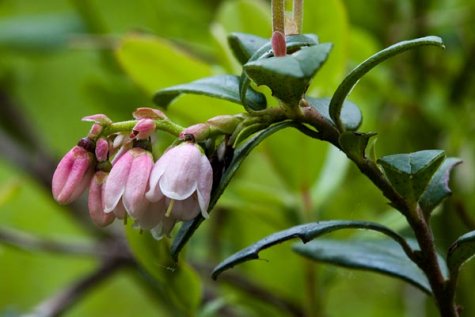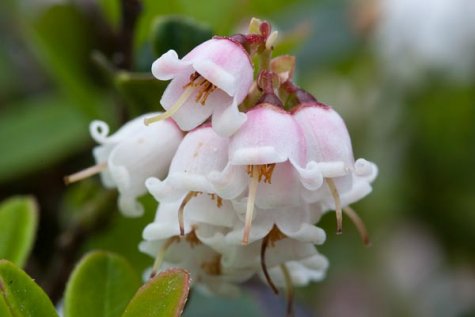Cowberries flowering in pine forests
Photos: Arne Ader
Translation: Liis
Cowberrry
Cowberry; Lingonberry Harilik pohl Vaccinium vitis-idaea
All our familiar forest berries belong to the heather (Ericaceae) family and the bilberry (Vaccinium) genus: the bilberry, bog bilberry, cowberry and the cranberry.
The preferred soils for cowberries are water permeable sandy soils, less often peat soils. The ground is acid due to the slowly decaying conifer needles and that suits cowberries. The forest habitat types are dry light-filled pine forests, but also heath, bog or marsh forests and habitats often overlap with those of bilberries.
The evergreen shrub or dwarf shrub of the cowberry grows to a height of about a quarter of a metre. The delicate flowers are bisexual, three up to twelve together in hanging racemes at the tips of shoots. The calyx is small, whitish or with a pink tinge and with quite large triangular tips. The corolla is bell-shaped, with an open orifice and the carpel protruding from the flower.
The leaves have short stalks, are leathery and elliptical. They are shiny on top with slightly down-turned edges and young leaves are brighter green. The leaf undersides are dull green, with brownish speckles (a sure species characteristic compared to bearberry).
Cowberries mostly expand their patches by horizontal shoots. Up to half a metre from the parent plant new plants grow up. The most common life rhythm is this: the cowberry plant sends up a shoot, an evergreen cowberry plant grows for four-five years, flowers, sets fruit, and then finishes its life cycle; but of course there are exceptions.
Cowberry










